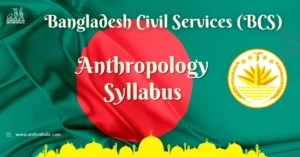AI Answer Evaluation Platform Live Now. Try Free Answer Evaluation Now
Ethnographic Method of Research
Ethnography originates from the field of anthropology, specifically, from cultural anthropology. The term itself comes from the Greek words “ethnos” (meaning people) and “graphein” (meaning to write), signifying its core purpose as a method to understand and describe human cultures [1]. It has traditionally involved the immersion of the researcher in a culture for an extended period, studying people’s behaviors, customs, and social interactions.

The origins of ethnographic method of research can be traced back to the early explorations of culture by pioneers like Bronislaw Malinowski and Franz Boas in the early 20th century. These scholars emphasized the importance of detailed observation and the need to understand a culture from its insiders’ perspectives [2,3].
Key Scholars and Studies in the Field
Malinowski is best known for his seminal work, “Argonauts of the Western Pacific” [3], where he described the Trobriand Islanders’ complex trade system. His immersive approach and the concept of “participant observation” set the methodological standard for future ethnographic work.
Similarly, Boas, often deemed the “Father of American Anthropology,” promoted the idea of cultural relativism, arguing against ethnocentric interpretations of other cultures [2]. His work on Native American cultures remains foundational to ethnographic studies.
Later, Clifford Geertz’s interpretive approach to ethnography emphasized the importance of understanding the symbolic and meaning-making aspects of culture. His famous study of the Balinese cockfight is a perfect illustration of this approach [4].
Ethnography as a Qualitative Research Method
As a qualitative research method, ethnography provides in-depth insights into people’s lived experiences, allowing us to understand their practices, values, and worldviews from their perspective. Unlike quantitative research, it doesn’t seek to generalize or predict, but instead seeks to interpret and understand.
Types of Ethnography
Ethnography has evolved over time, branching into various forms to accommodate the complexities of human experiences and cultural phenomena.
Traditional Ethnography
Traditional ethnography, following the footsteps of Malinowski and Boas, involves the researcher immersing themselves in a community or culture over a significant period to learn about its norms, values, and practices through direct observation and participation. A well-known example of traditional ethnography is E.E. Evans-Pritchard’s study on the Nuer community in Sudan, exploring their social structures and cultural norms [5].
Autoethnography
Autoethnography, as the name suggests, involves the researcher reflecting on their personal experiences and connecting them to wider cultural, political, and social meanings and understandings. It provides space for researchers to acknowledge and leverage their subjectivity and personal narratives in understanding culture. Annette Lareau’s work on class and parenting styles can be considered an autoethnographic study, where her experience as a mother informed her research [6].
Critical Ethnography
Critical ethnography goes beyond description of cultural practices to question power structures, advocate for marginalized groups, and promote social change. It involves a critical examination of the socio-political context of the culture under study.
Virtual or Digital Ethnography
With the advent of technology and digital spaces, ethnographers now study online communities using virtual or digital ethnography. This approach understands digital spaces as cultural phenomena, allowing for the study of online practices, identities, and interactions (Hine, 2000). An example is Tom Boellstorff’s exploration of the virtual world “Second Life” [7].
Stages in Ethnographic Research
Ethnographic research involves several stages, each crucial to ensuring the quality and credibility of the study.
Pre-Fieldwork Considerations
Prior to conducting fieldwork, ethnographers must articulate their research questions, address ethical considerations, and secure access to the field site. For instance, research questions should aim to elucidate cultural phenomena or social practices. Ethical issues may involve obtaining informed consent from participants, ensuring confidentiality, and minimizing harm. Securing access often requires negotiations with gatekeepers and an understanding of the cultural context to avoid misunderstandings or conflicts.
Data Collection Methods
Data collection in ethnography often employs multiple methods for a holistic understanding of the research context. Participant observation involves researchers engaging with the daily activities of the studied community, observing and documenting behaviors, interactions, rituals, and events. Interviews, both formal and informal, can be used to gather in-depth personal narratives and perspectives. Documentary analysis of materials like letters, photographs, or official documents can provide contextual and historical insights. Visual methods, such as photography or video recording, can capture non-verbal cues and spatial arrangements.
Fieldwork
The fieldwork stage involves immersion in the research setting, building rapport with participants, and systematic data recording. Immersion facilitates a nuanced understanding of the culture, while building rapport helps gain trust and cooperation from participants. Data is recorded in field notes, which can be descriptive, reflective, or analytic.
Data Analysis
Ethnographic data analysis involves coding, thematic analysis, and narrative construction. Coding helps identify patterns or themes across the data. Thematic analysis groups these codes into broader themes. Narrative construction involves weaving the thematic findings into a coherent and meaningful story.
Writing and Representation
The final stage involves writing the ethnographic account. Here, the researcher must balance factual representation with a compelling narrative, and reflect on their role and influence on the research— a process known as reflexivity. They must also consider their positionality, acknowledging how their background, perspectives, and biases might have influenced the research process and findings.
Participant Observation
Participant observation, a cornerstone of ethnographic research, requires ethnographers to navigate the complex roles of insider and outsider within the communities they study.
As an insider, the ethnographer adopts the roles, behaviors, and language of the community, aiming to gain a deep, emic (or insider’s) perspective of the culture. They engage in the community’s daily routines and rituals, which can foster trust and openness among participants, often leading to richer and more nuanced data.
However, becoming too immersed might lead to “going native,” where the ethnographer loses their analytical distance and could unintentionally overlook significant cultural aspects. This concern underscores the necessity of also maintaining an outsider role.
As an outsider, the ethnographer can keep a critical distance necessary for objective observation and analysis. This etic (or outsider’s) perspective can provide a broader understanding of the cultural phenomena within larger societal contexts.
Balancing these roles is crucial. Ethnographers must maintain a sense of self-awareness and reflexivity about their positioning in the field, acknowledging their influences on, and being influenced by, the cultural context they are studying.
Ethnographic Analysis
Interpreting Data: Pattern Identification, Narrative Construction
In ethnographic analysis, interpreting data involves processes like pattern identification and narrative construction.
- Pattern Identification: Ethnographic data is rich and multifaceted, encompassing field notes, interviews, photographs, and more. To make sense of this data, ethnographers look for recurring themes, categories, or patterns. This process, often termed “coding,” involves breaking down the data into manageable parts, categorizing them, and exploring relationships among these categories. For instance, an ethnographer studying a local market may identify patterns such as bargaining strategies, vendor-customer relationships, or daily rhythms of trading activities.
- Narrative Construction: Once patterns are identified, ethnographers weave these insights into a compelling narrative. This involves arranging themes and findings in a way that represents the cultural context meaningfully and accurately. The constructed narrative should be reflexive and consider the ethnographer’s role and influence on the research. For example, the ethnographer might narrate the dynamism of the local market by weaving together descriptions of interactions, sounds, smells, and personal anecdotes, while reflecting on their positionality in the field.
Challenges and Limitations
Ethnographic research, despite its valuable insights, comes with its challenges and limitations.
One challenge is the time-intensive nature of ethnography, which requires prolonged immersion in the field. This can be a deterrent for researchers working within specific timelines.
Moreover, ethnographers face the risk of going native, losing their analytical objectivity due to deep immersion. Also, the selectivity of observation and interpretation, influenced by the researcher’s bias and preconceptions, could affect the validity of the findings.
Ethnographic findings, rich in context-specific insights, often face the critique of lacking generalizability. However, ethnographers argue that the aim of their work is not to generalize, but to provide deep, contextual understanding.
Future Directions in Ethnography
With technological advancements, digital ethnography has emerged, examining virtual spaces as cultural contexts. This allows for the exploration of new forms of identity, interaction, and community in the digital age.
Autoethnography, focusing on the researcher’s experiences, helps in understanding the self and personal narratives as part of the cultural phenomena.
Multi-sited ethnography studies multiple sites to understand broader social, cultural, or global phenomena, challenging the traditional single-site ethnography. These developments signal an exciting future for the field of ethnography.
References
[1] O’Reilly, K. (2012). Ethnographic Methods. Routledge. https://www.researchgate.net/publication/287833554_Ethnographic_methods_second_edition
[2] Boas, F. (1920). The methods of ethnology. American Anthropologist, 22(4), 311-321.
[3] Malinowski, B. (1922). Argonauts of the Western Pacific: An account of native enterprise and adventure in the archipelagoes of Melanesian New Guinea. Routledge.
[4] Geertz, C. (1973). The Interpretation of Cultures. Basic Books.
[5] Evans-Pritchard, E. E. (1940). The Nuer: A Description of the Modes of Livelihood and Political Institutions of a Nilotic People. Clarendon Press.
[6] Lareau, A. (2003). Unequal Childhoods: Class, Race, and Family Life. University of California Press.
[7] Boellstorff, T. (2008). Coming of Age in Second Life: An Anthropologist Explores the Virtually Human. Princeton University Press.




